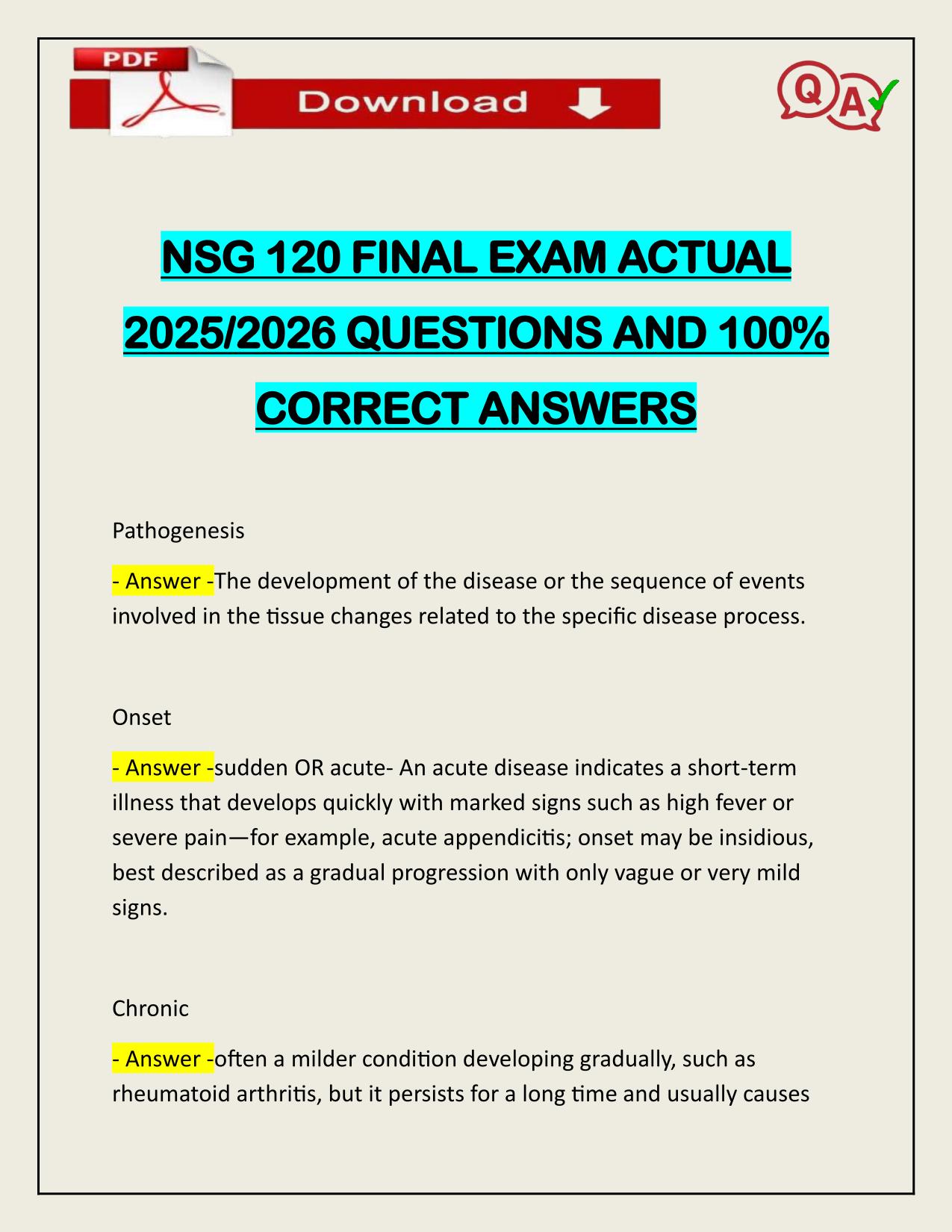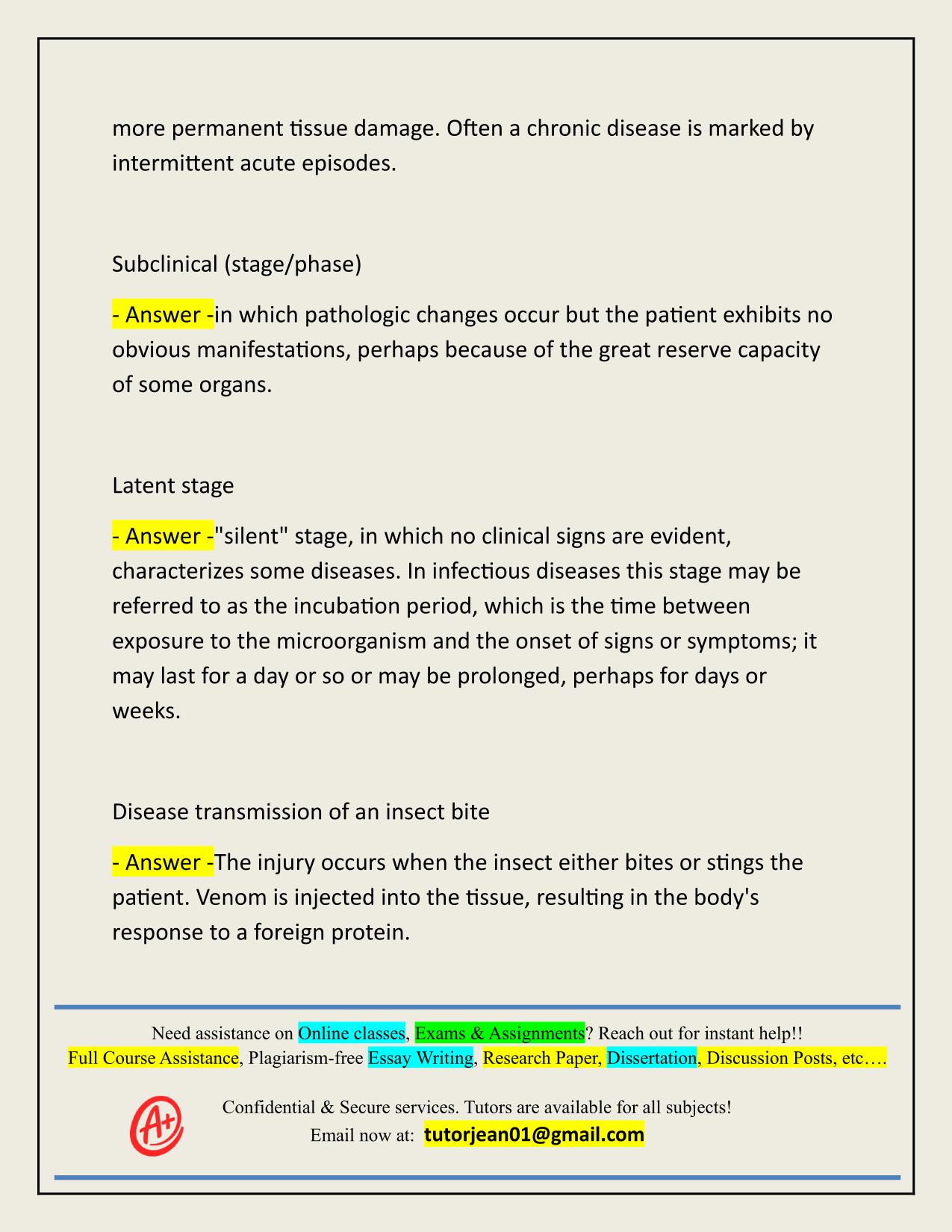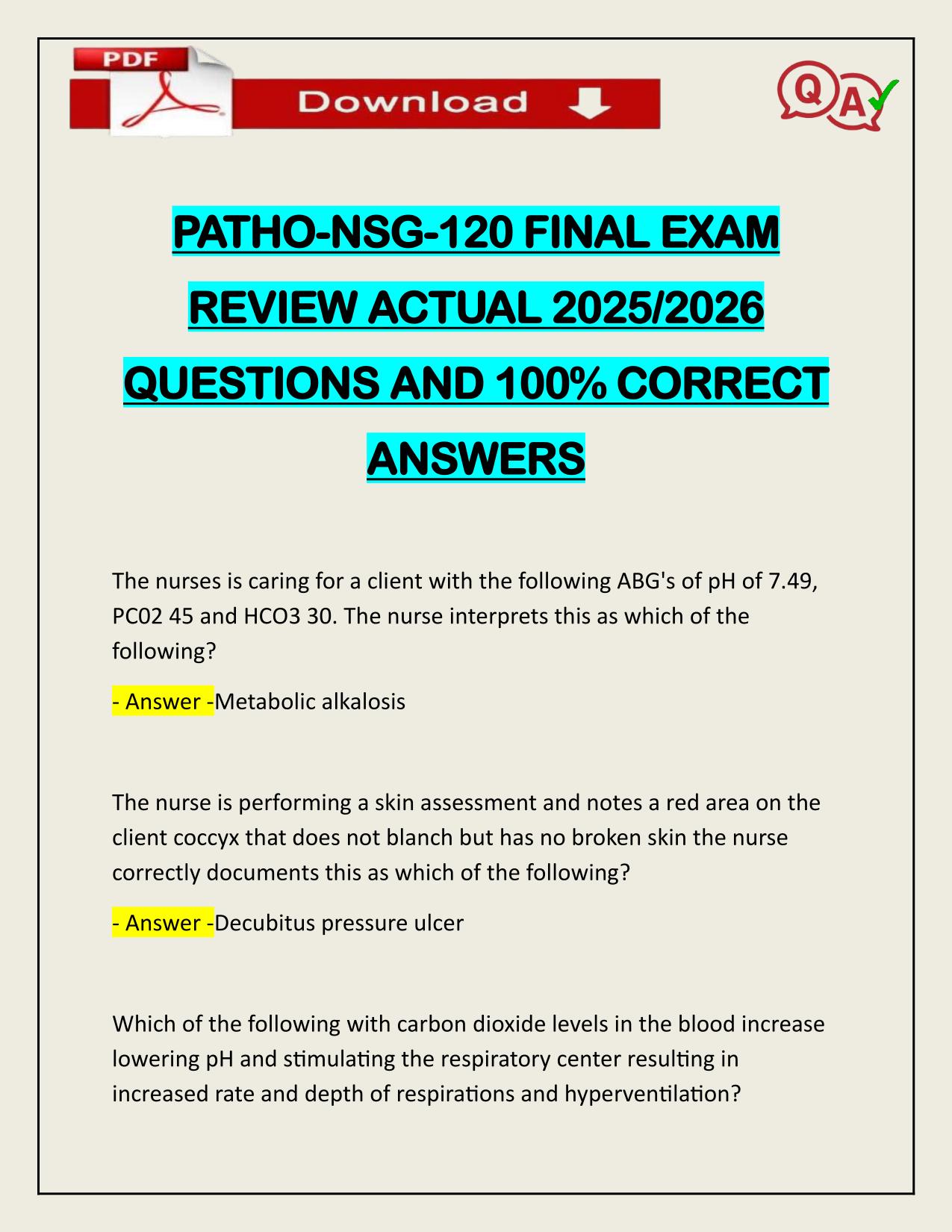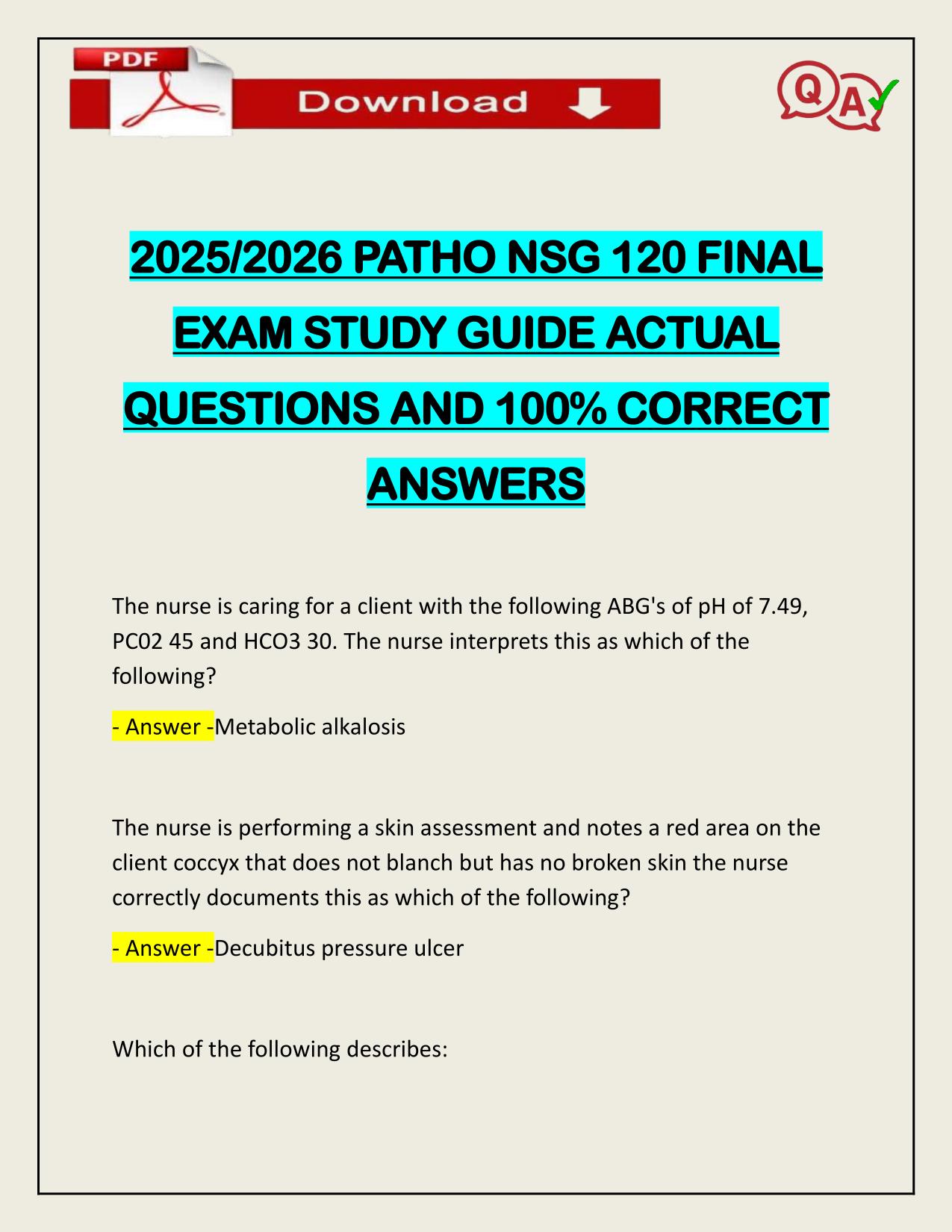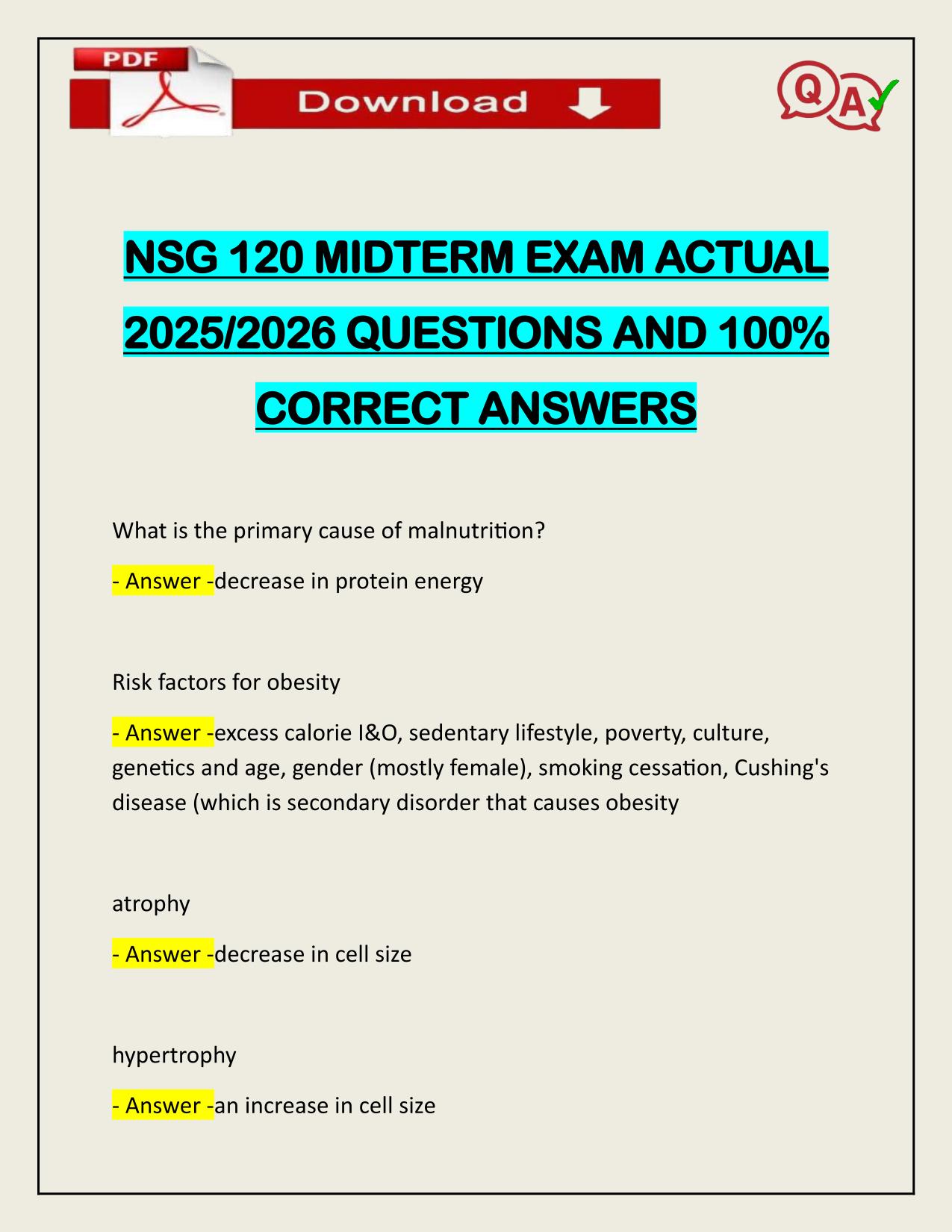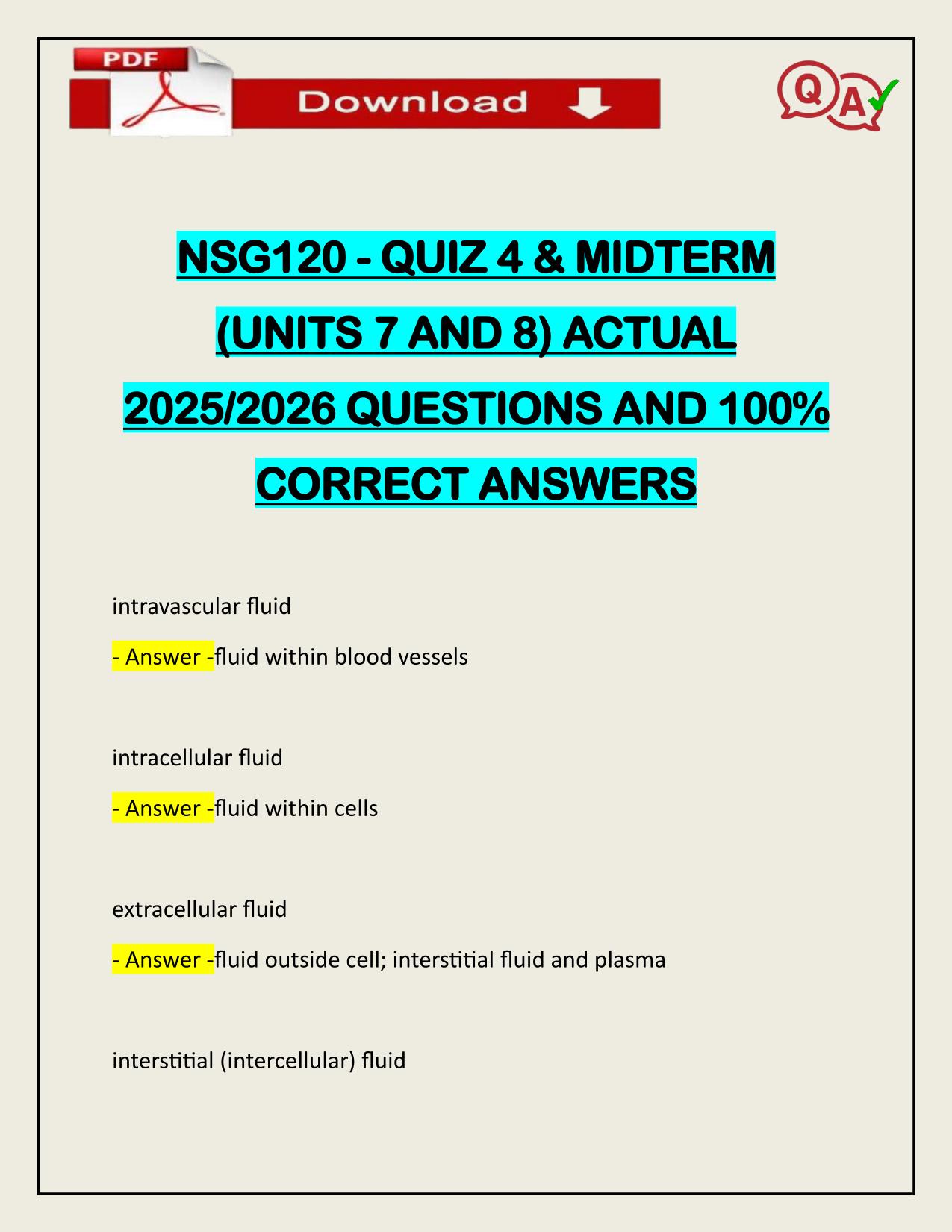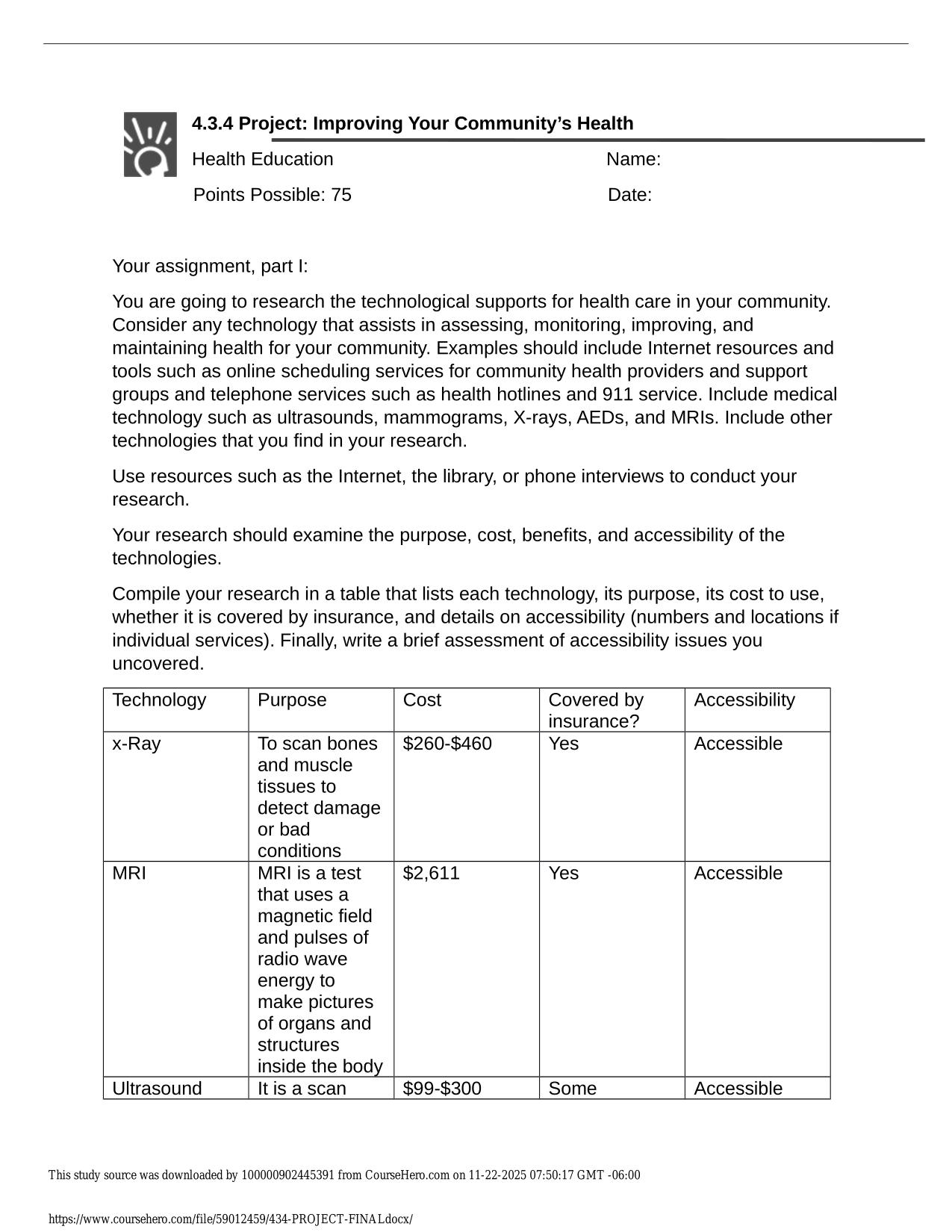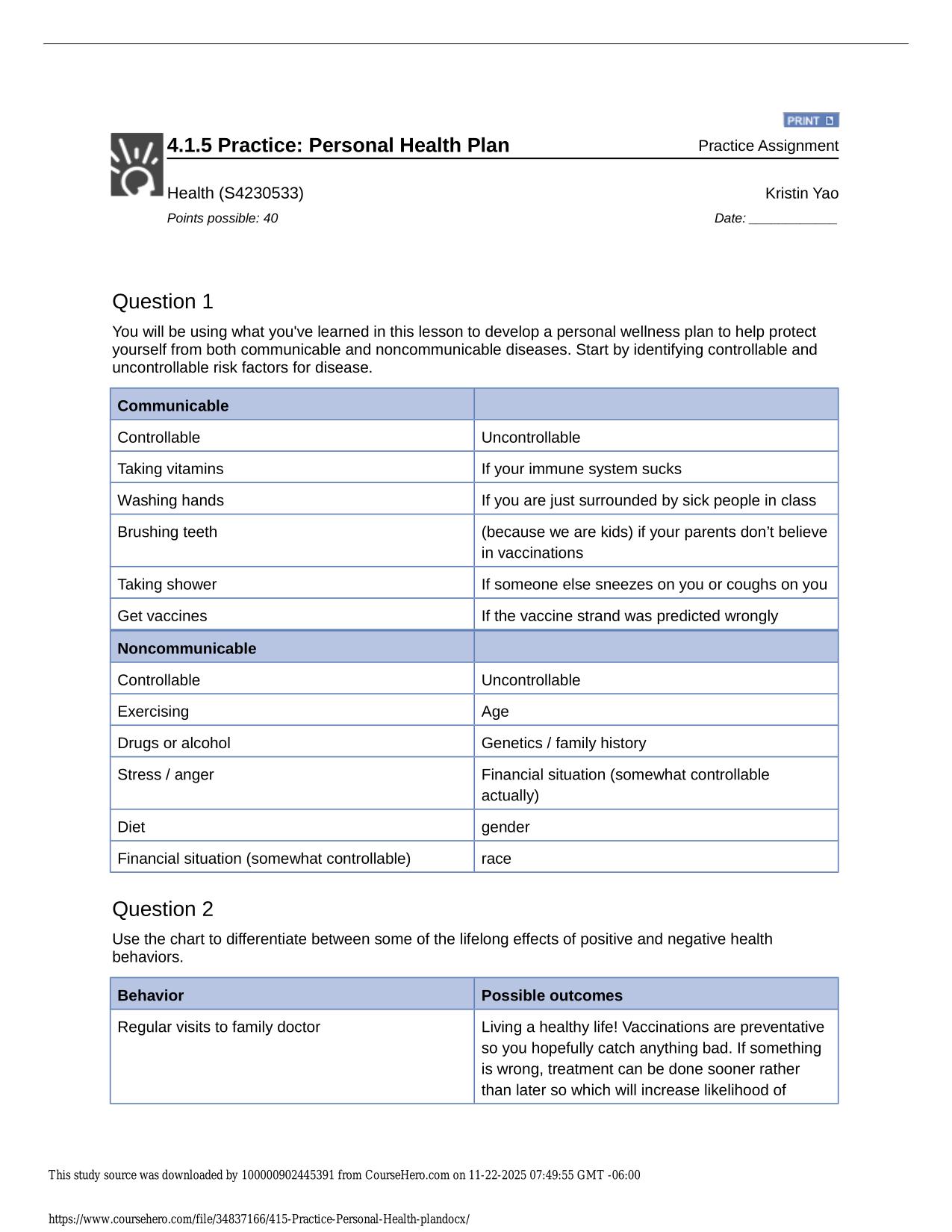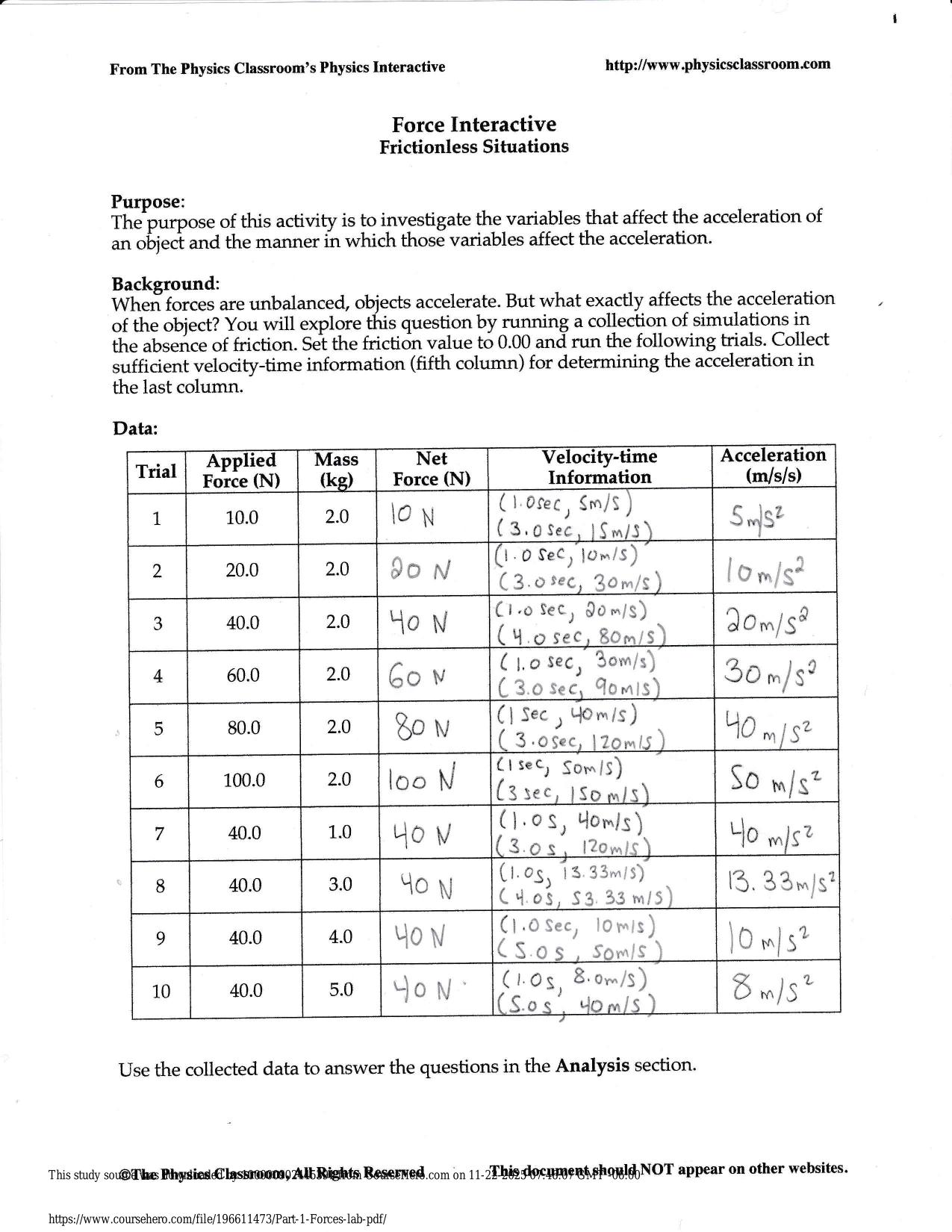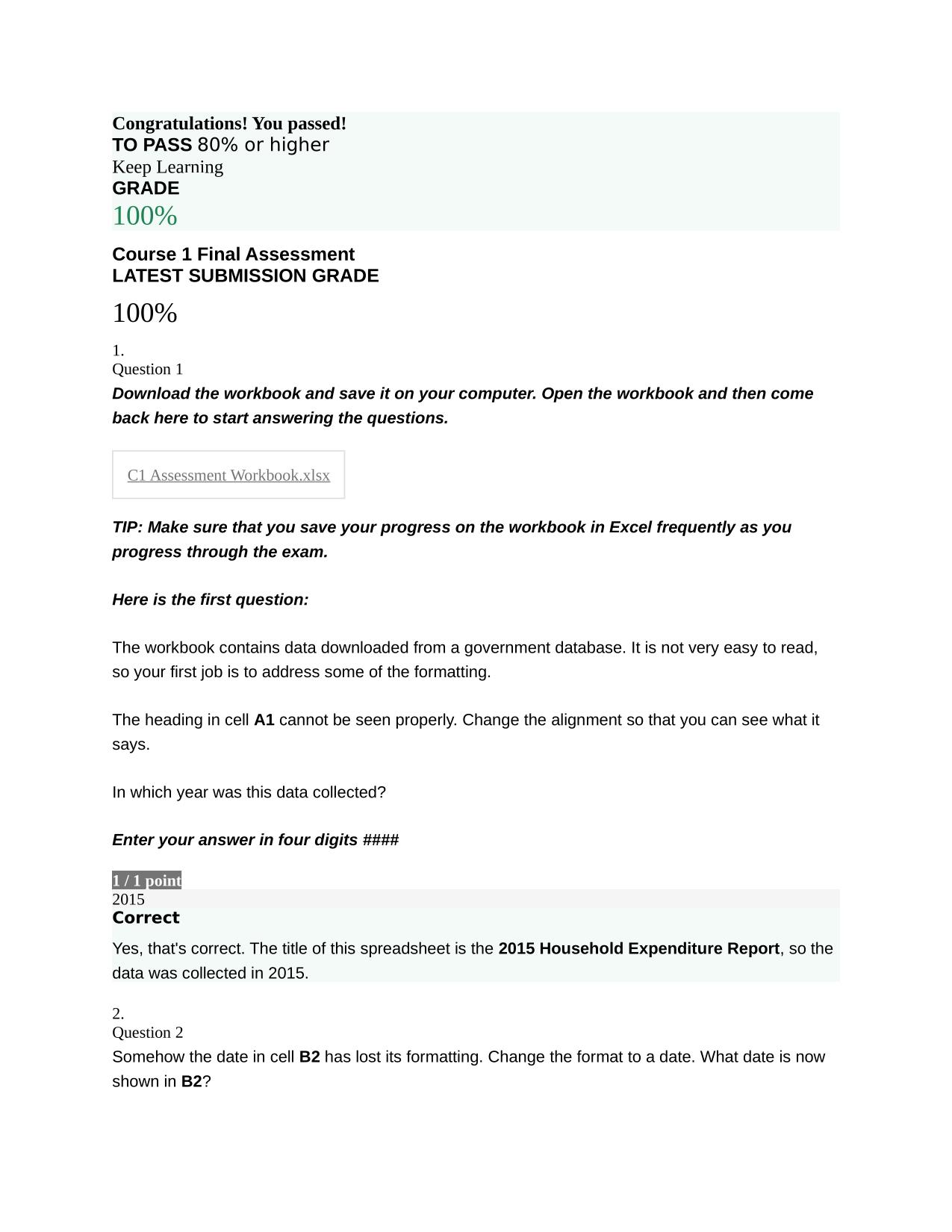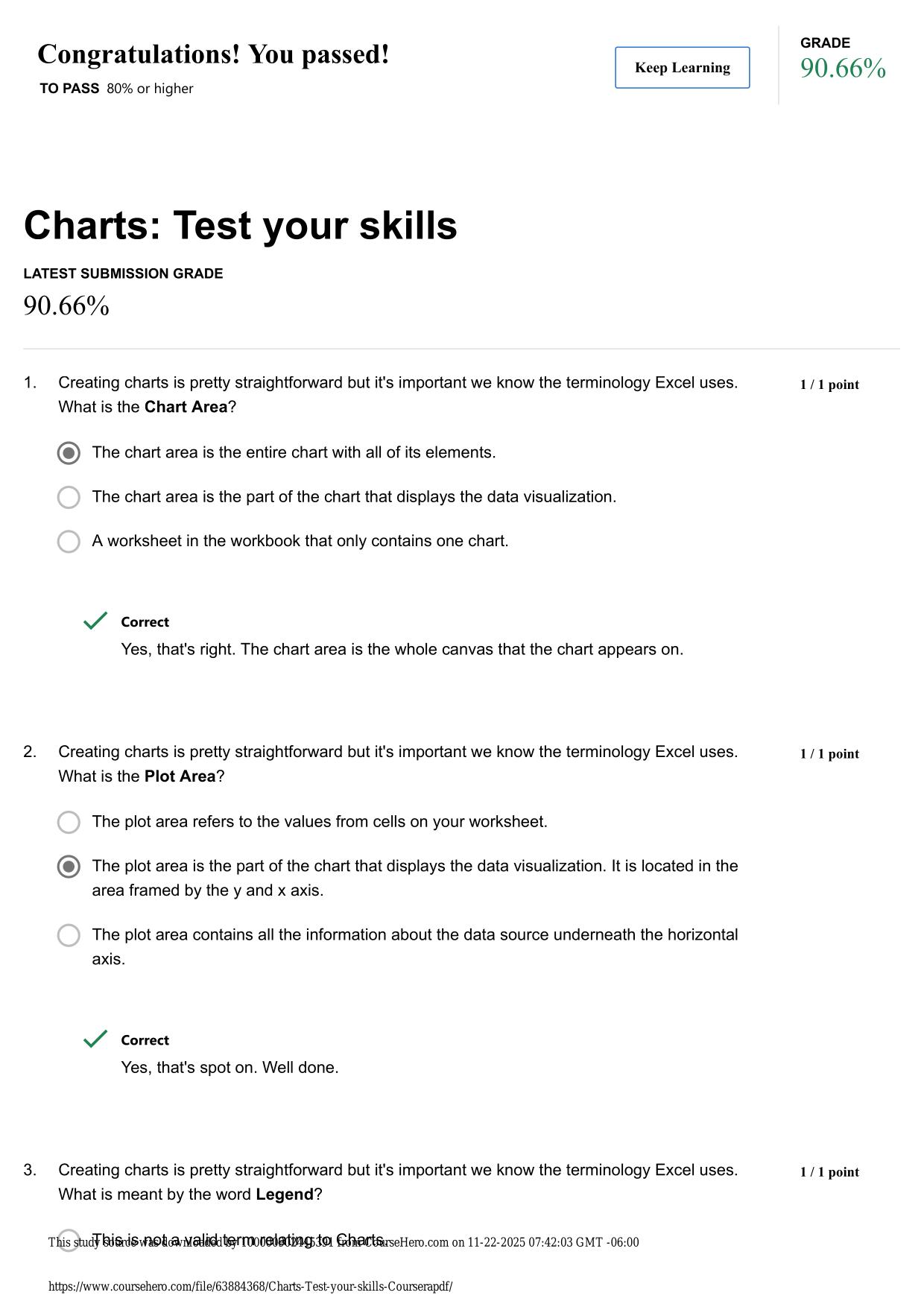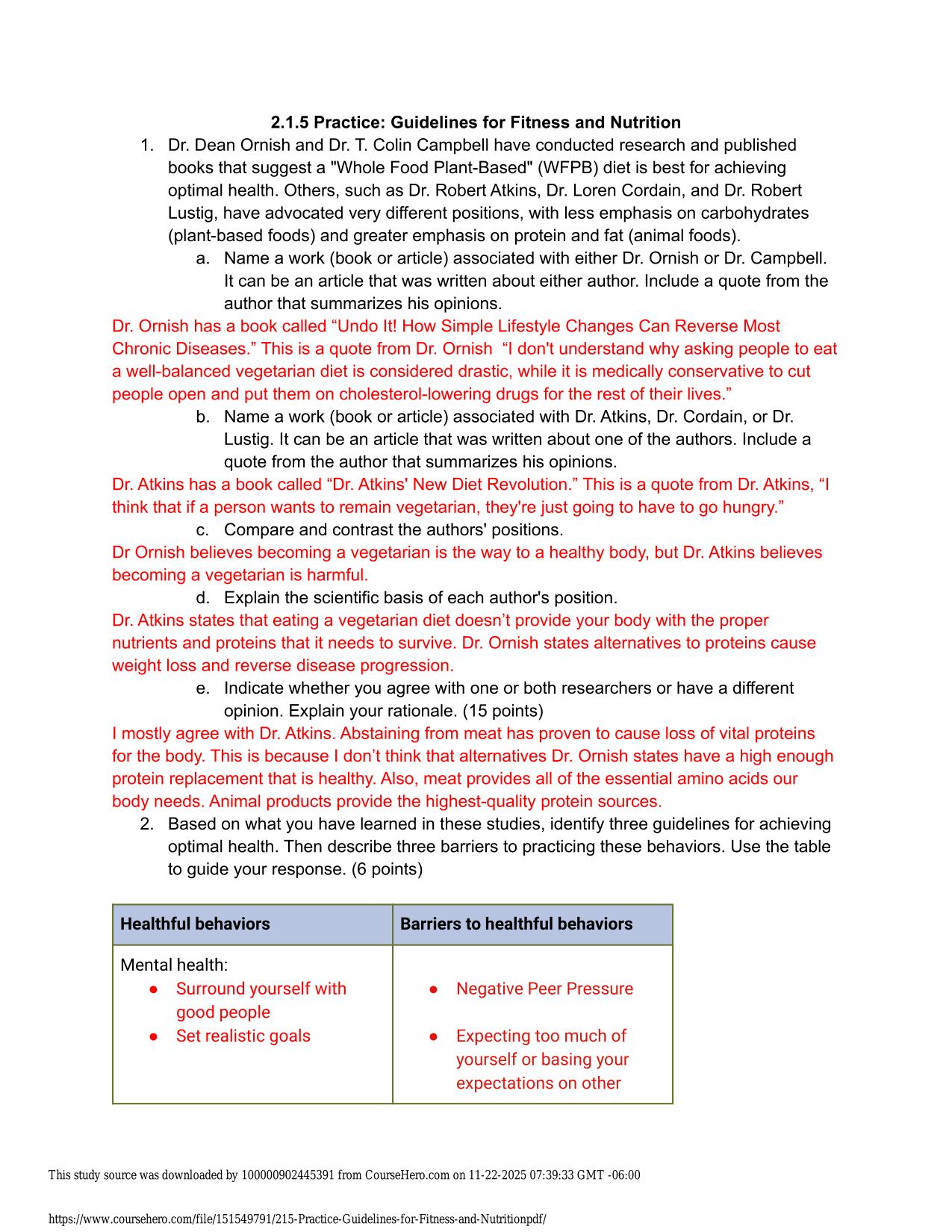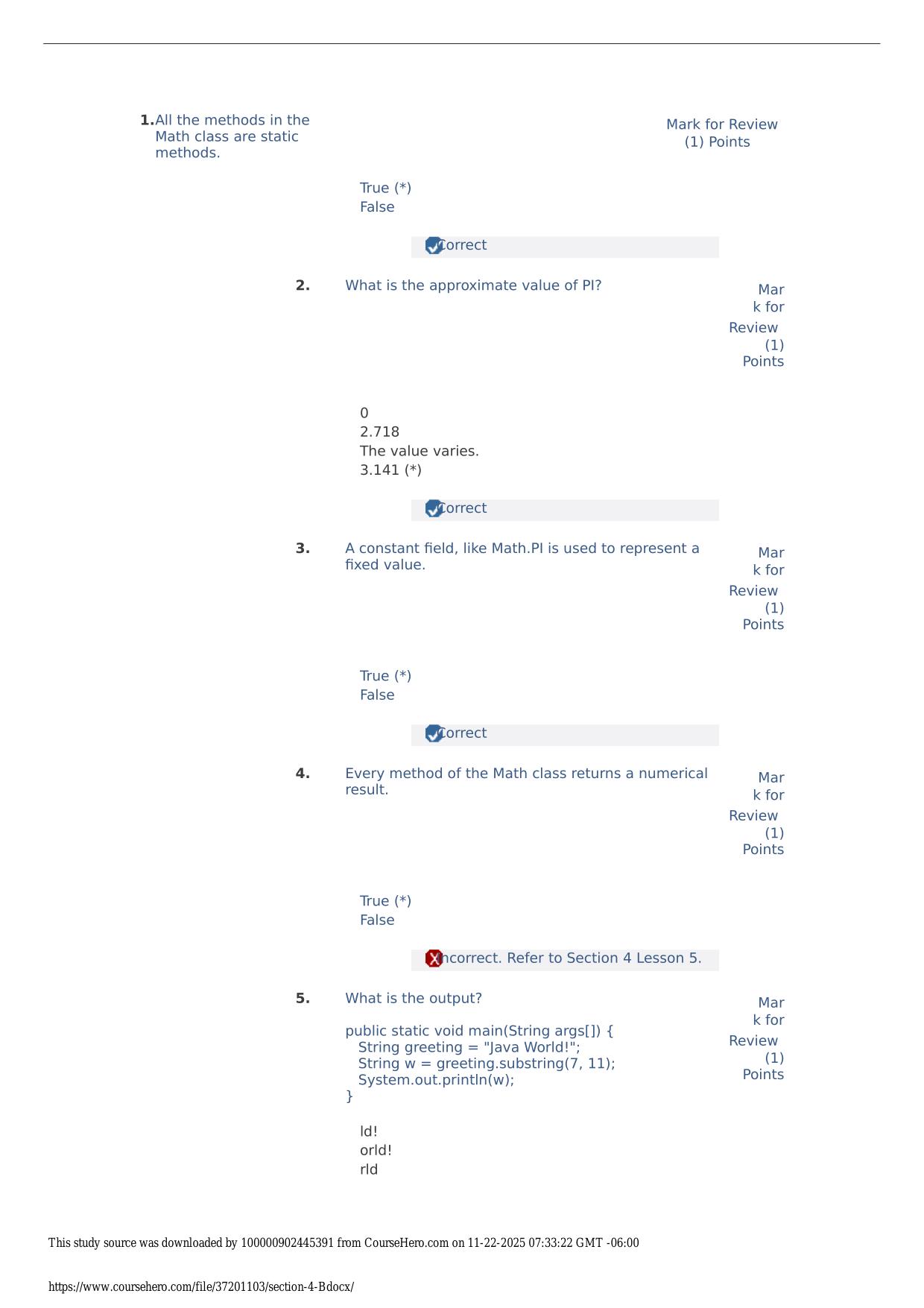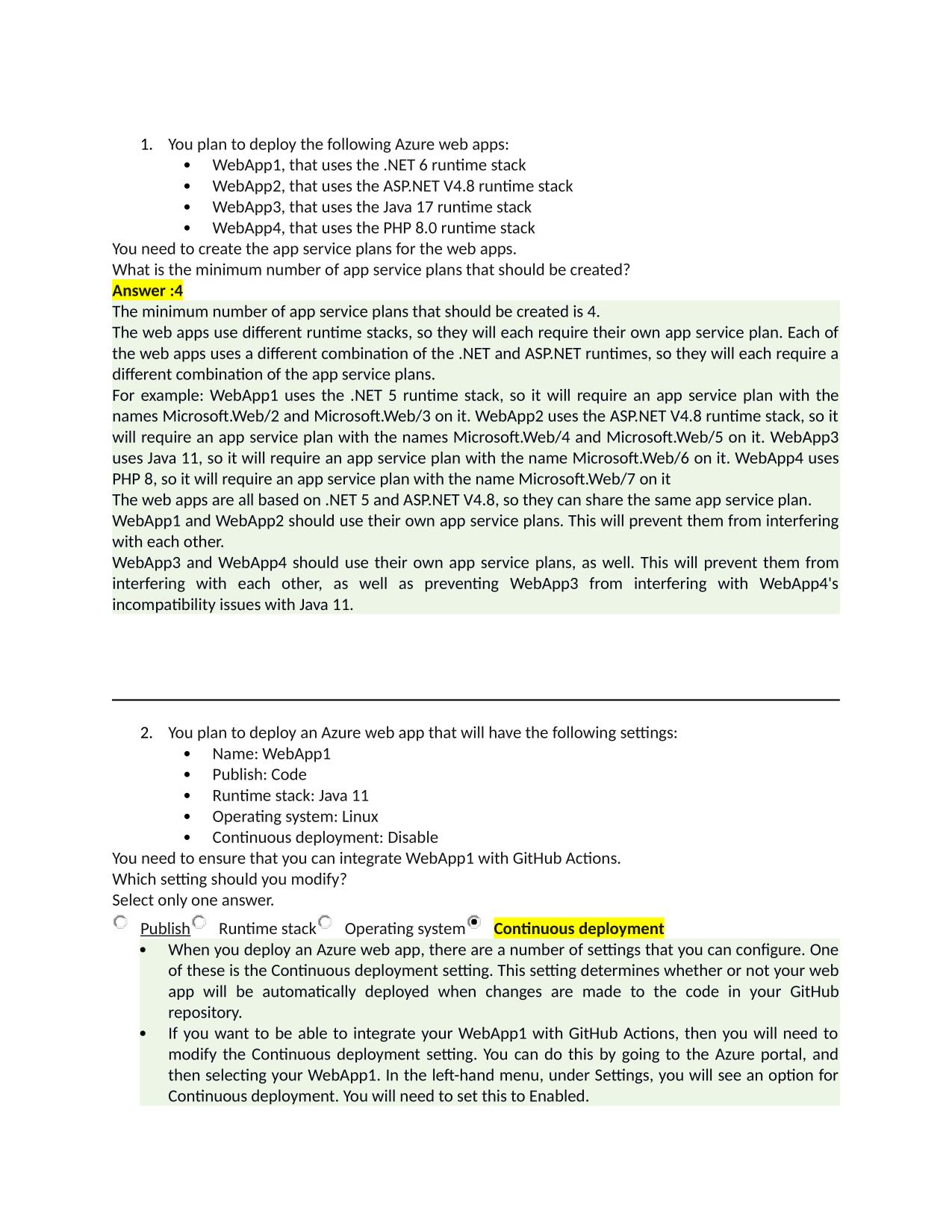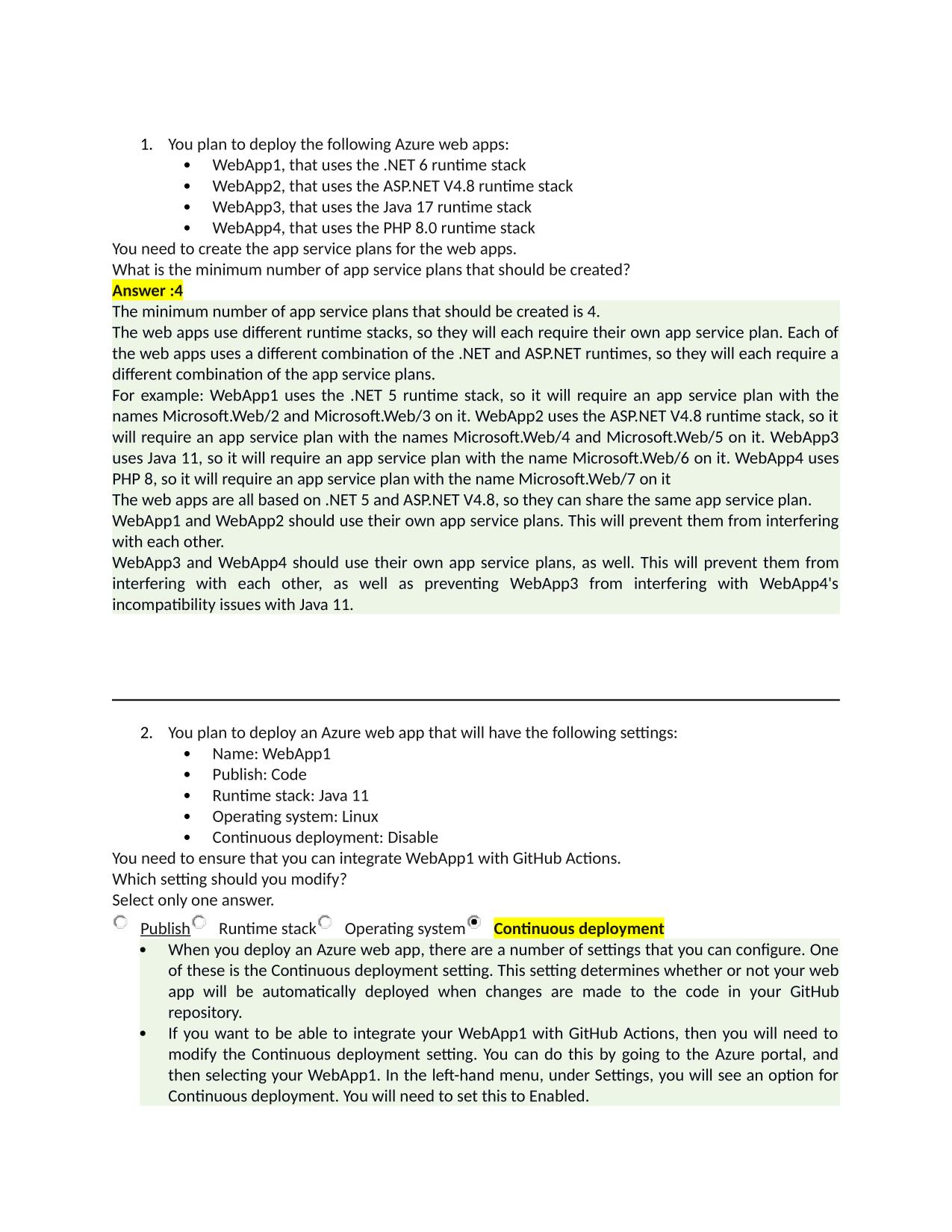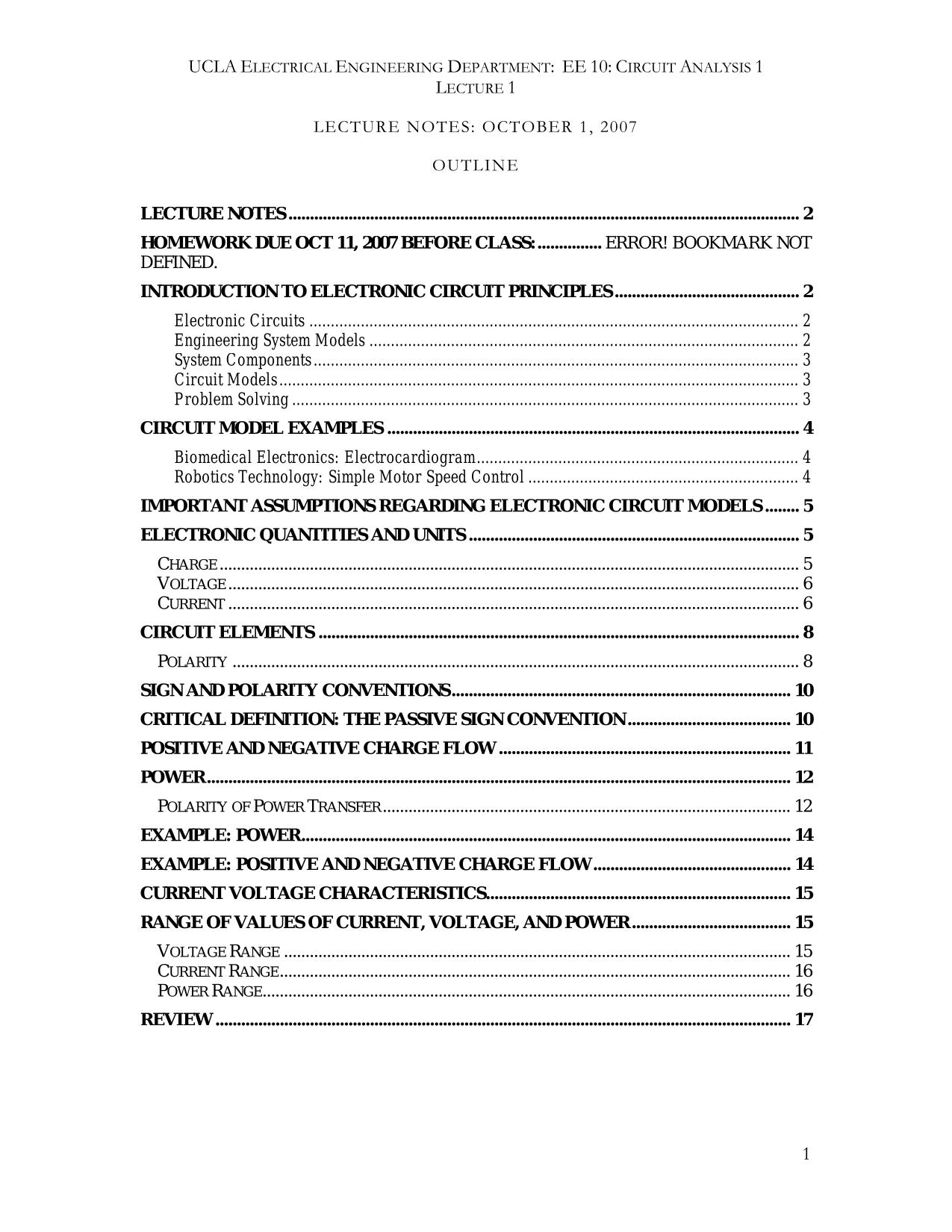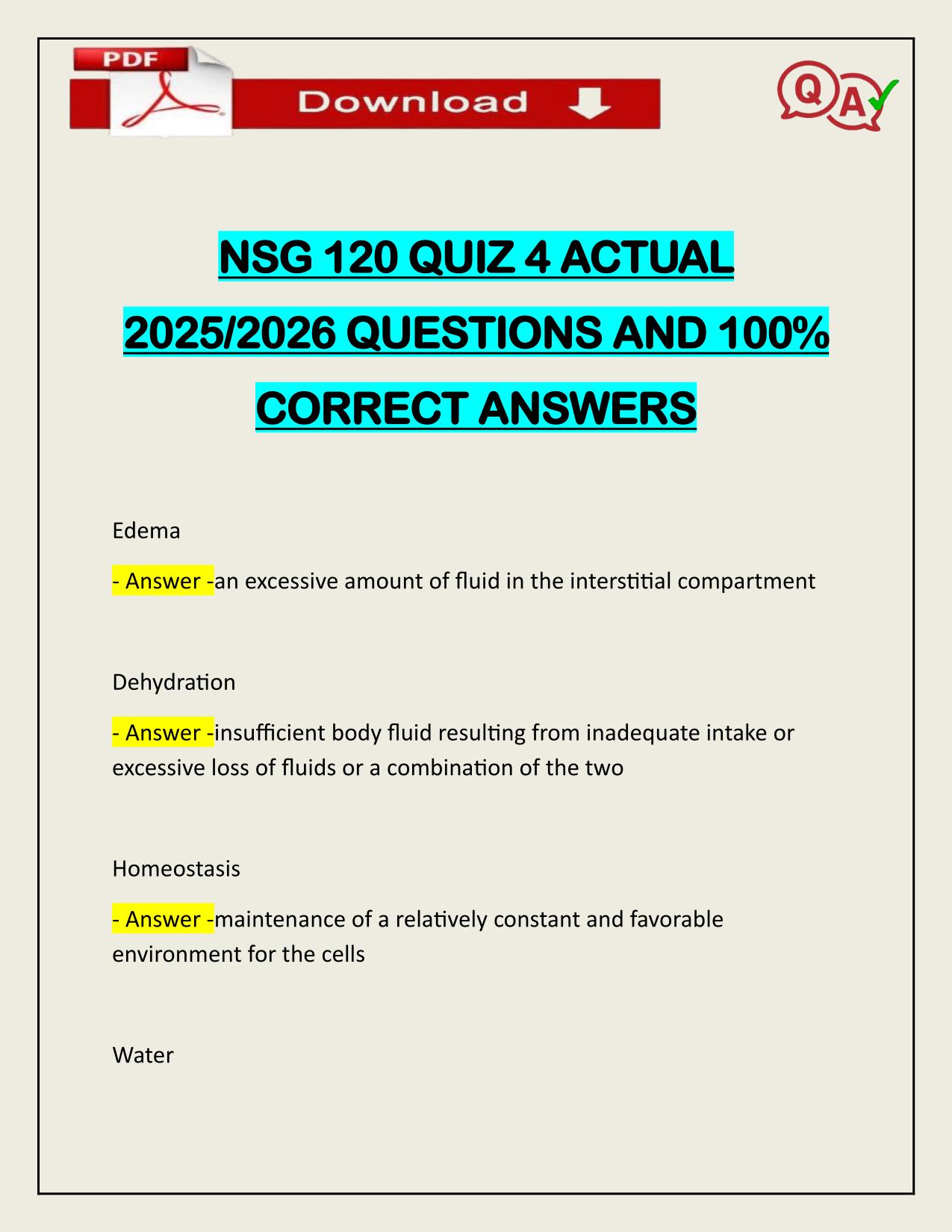NSG 120 FINAL EXAM ACTUAL 2025/2026
Course:
PATHO NSG 120
Institution:
PATHO NSG 120
NSG 120 FINAL EXAM ACTUAL 2025/2026 QUESTIONS AND 100% CORRECT ANSWERS Pathogenesis - Answer -The development of the disease or the sequence of events involved in the tissue changes related to the specific disease process. Onset - Answer -sudden OR a...
After purchase, you get:
✅ Instant PDF Download
✅ Verified answer explanations
✅ Refund if not Satisfied
✅ Prepared for 2025/2026 test cycle
Overview
Breakdown notes throughout the content provide additional context to support complex reasoning. These helpful asides offer deeper insight into why certain approaches work better than others. The extra context often makes challenging concepts click in ways that simplified explanations can't achieve. Many learners find these notes provide exactly the missing piece they needed to fully understand difficult topics.
Who Is This For?
Suitable for academic programs, tutoring sessions, and exam bootcamps focusing on PATHO NSG 120 and Exam (elaborations) fundamentals. Educators find it saves them preparation time while ensuring quality content. The material adapts well to different teaching environments.
Related Keywords
Detailed Study Description
Frequently Asked Questions
Document Information
| Uploaded on: | October 27, 2025 |
| Last updated: | November 17, 2025 |
| Number of pages: | 64 |
| Written in: | 2025/2026 |
| Type: | Exam (elaborations) |
| Contains: | Questions & Answers |
| Tags: | NSG 120 FINAL EXAM ACTUAL 2025/2026 QUESTIONS AND 100% CORRECT ANSWERS Pathogenesis - Answer -The development of the disease or the sequence of events involved in the tissue changes related to the specific disease process. Onset - Answer -sudden OR acute- An acute disease indicates a short-term illness that develops quickly |
Seller Information

AdelineJean
User Reviews (0)
Exam (Elaborations)
$10.00
Bundle Deal! Get all 6 docs for just $22.00
Add to Cart
100% satisfaction guarantee
Refund Upon dissatisfaction
Immediately available after purchase
Available in Both online and PDF
$10.00
| 0 sold
Discover More resources
Available in a Bundle
Inside The Document
NSG 120 FINAL EXAM ACTUAL 2025/2026 QUESTIONS AND 100% CORRECT ANSWERS Pathogenesis - Answer -The development of the disease or the sequence of events involved in the tissue changes related to the specific disease process. Onset - Answer -sudden OR acute- An acute disease indicates a short-term illness that develops quickly with marked signs such as high fever or severe pain—for example, acute appendicitis; onset may be insidious, best described as a gradual progression with only vague or very mild signs. Chronic - Answer -often a milder condition developing gradually, such as rheumatoid arthritis, but it persists for a long time and usually causes more permanent tissue damage. Often a chronic disease is marked by intermittent acute episodes. Subclinical (stage/phase) - Answer -in which pathologic changes occur but the patient exhibits no obvious manifestations, perhaps because of the great reserve capacity of some organs. Latent stage - Answer -"silent" stage, in which no clinical signs are evident, characterizes some diseases. In infectious diseases this stage may be referred to as the incubation period, which is the time between exposure to the microorganism and the onset of signs or symptoms; it may last for a day or so or may be prolonged, perhaps for days or weeks. Disease transmission of an insect bite - Answer -The injury occurs when the insect either bites or stings the patient. Venom is injected into the tissue, resulting in the body's response to a foreign protein. Need assistance on Online classes, Exams & Assignments? Reach out for instant help!! Full Course Assistance, Plagiarism-free Essay Writing, Research Paper, Dissertation, Discussion Posts, etc…. Confidential & Secure services. Tutors are available for all subjects! Email now at: tutorjean01@gmail.com Rocky Mountain Spotted Fever/Tick Bite disease transmission - Answer -The causative agent, Rickettsia rickettsii, is transmitted by the wood tick and is carried in the feces of infected ticks. It is introduced into the bloodstream of a person during a prolonged tick bite. Symptoms of Rocky Mountain Spotted Fever - Answer -Class triad: headache, fever, maculopapular rash (bumps and petechial rash) high fever Malaria/Mosquito bite disease transmission - Answer -Malaria is caused by four species of the protozoan genus Plasmodium, which is transmitted from infected human to human by the bite of mosquito vectors or, less commonly, by blood transfusion or IV drug use. Disease transmission of animal/human bites - Answer -The bite occurs when the offending animal is agitated, frightened, threatened, or angry. Bites can be from domestic animals, such as cats and dogs; farm animals; or wild animals, such as skunks, bats, raccoons, and foxes. Human bites have been recorded. The pattern of the teeth marks is helpful in determining the type of bite, human or animal, and the type of animal that did the biting if not immediately known. Snake bite disease transmission - Answer -Four kinds of poisonous snakes are known to inhabit the United States: rattlesnakes, copperheads, water moccasins, and coral snakes. Some bites are the work of nonpoisonous snakes, but all snakebites should be treated as poisonous by the first aid provider. Cardinal Signs of Inflammation - Answer -The cardinal signs of inflammation are redness (rubor or erythema), heat, swelling, and pain; sometimes loss of function Diangostic blood changes that may indicate inflammation? - Answer -*Leukocytosis (increased WBC) *Differential count of WBC Need assistance on Online classes, Exams & Assignments? Reach out for instant help!! Full Course Assistance, Plagiarism-free Essay Writing, Research Paper, Dissertation, Discussion Posts, etc…. Confidential & Secure services. Tutors are available for all subjects! Email now at: tutorjean01@gmail.com
CourseHero & Studypool Unlocks
Get Unlocked CourseHero and Studypool documents files instantly to your email, simply by pasting your link and clicking "Unlock Now". Learn more on how to unlock here.
